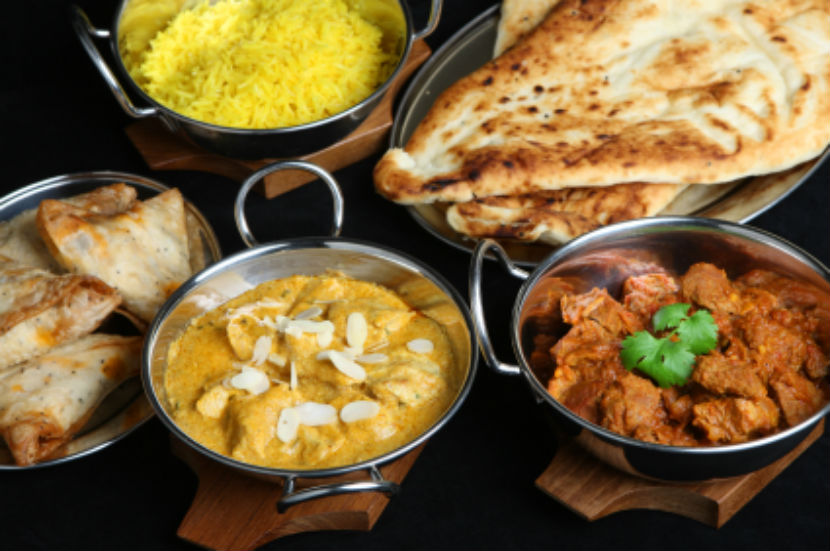
Many staple foods in the North Indian diet are good for your health. From fresh mango to lentils to cauliflower, there are many nutrient-rich choices. However, deep fried items, high-fat foods and refined flour are also common and should be limited.
If you have diabetes, you can work with your healthcare team to develop a plan that is right for you. It will likely include exercise, a meal plan, blood sugar monitoring, and perhaps medication. This article will focus on the dietary changes that you can make and will tell you which of your favourite traditional foods fit into a healthy diet and which should be limited to help you manage diabetes.
What is type 2 diabetes?
Diabetes is a disease where the pancreas does not make enough insulin or the body does not use insulin properly. Insulin is a hormone made by the pancreas.
When the body is working well, insulin helps carry sugar (glucose) from your blood to your cells where it is used for energy. If you have diabetes, your body's cells do not receive enough glucose, so it stays in your blood. High blood glucose (or high blood sugar) can lead to heart, kidney, vision and blood vessel problems.
Who has a higher risk of diabetes?
Some ethnic groups in Canada have a higher risk of getting diabetes, including people of North Indian and Pakistani descent. There are certain genes that affect insulin function. Having these genes increases your risk of diabetes. These genes are commonly found in high risk populations such as people with North Indian and Pakistani heritage.
What to eat…and when
If you have diabetes, it is important to eat every 4 to 6 hours to keep your blood sugar levels stable. Try to have three daily meals at regular times and have healthy snacks when you are hungry. A balanced meal has foods from at least 3 of the 4 food groups:
-
Vegetables and Fruit
-
Grain Products
-
Milk and Alternatives
-
Meat and Alternatives
You can work with a Registered Dietitian to make a personal meal plan. An example of a healthy meal plan may look like this:
Breakfast:
-
1 baked parantha (preferably whole wheat
-
½ a cup of savoury chutney
-
½ a cup of papaya
-
1 cup of chai (tea, no sugar) with skim milk
Lunch:
-
1 cup of cholay (curried chickpeas
-
½ a cup of rice (try brown rice
-
½ a cup of cauliflower or broccoli
-
1 orange
-
1 cup of tea, coffee or water
Snack:
-
2 Tbsp of hummus on 1 whole wheat roti or chappati
-
½ a cup of berries
Dinner:
-
2 and a ½ oz of Tandoori chicken
-
½ a whole wheat naan
-
1 cup of cooked spinach
-
½ a cup of rice (try brown rice)
-
1 cup of salad with 1 Tbsp of oil-based salad dressing
Snack:
-
1 cup of mango lassi (made with low fat yogurt)
Store-bought mango lassi can have up to 4 teaspoons of added sugar per cup. Make your own with only fruit and enjoy the natural sweetness of mango. Or, use a sweetener or herbs and spices.
Choosing healthy fats
In addition to the four food groups, it is also important to include healthy fats in your diet. People with diabetes are at higher risk for heart disease so choosing better fats is important. Healthy fats are found in:
-
oils (olive, canola, sunflower)
-
nuts
-
seeds
-
avocado
-
oily fish such as salmon
Try to limit saturated fat like ghee, butter, cream, lard, shortening or palm oil. You can also lower saturated fat by choosing lean meat, skinless poultry and low-fat milk products. Choose lower fat cooking methods such as baking, broiling, barbequing, or roasting.
Limit foods that are high in fat such as:
-
Desserts
-
Pakoras
-
Samosas
-
Bhujia
-
Chivda
-
Namkeen
-
Gathia
-
Potato chips
-
Sev
-
Pani puri
-
Bhelpuri
Choosing carbohydrates
Carbohydrate is a word for foods that have starch, sugar and fibre. The type and amount of carbohydrate you eat and when you eat it is important. Having too much carbohydrate in a meal can cause your blood sugar to go too high. Your personal meal plan will have the right levels of carbohydrate for you.
If you have diabetes, choose more high-fibre foods. A type of fibre called soluble fibre may help control blood sugar levels. Try these high-fibre foods:
-
Vegetables: cauliflower, okra (Bhindi), eggplant (Brinjal/Baingan), bitter melon (Karela), spinach, potato, corn, sweet potato, broccoli, carrots
-
Fruit: apple, banana, berries, mango, papaya, pineapple, guava, lychees, melon, pomegranate
-
Grains: roti, chapati, rice, dalia, poha and missi roti made with whole wheat, millet or brown rice
-
Legumes: rajmah, channa dal, chole, matar, moong dal, tuvar dal and urad dal
-
Nuts and seeds: almonds, cashews, pistachios
Choose fewer products that are made from sugar, white flour, white rice and white potato. Limit foods such as:
-
Jam, sugar, jaggery (gur) and honey
-
Ice cream
-
Chocolate and candy
-
Baked goods
-
Chikki
-
Ladoo
-
Burfi
-
Jalebi
-
Halwa
These foods are mostly fat and sugar. They can make your blood sugar levels go too high. Talk to your dietitian about the type and amount of sweet foods that can fit into your meal plan.
Bottom line
By making small changes to traditional recipes, you can still enjoy your favourite foods. To help manage your blood sugar levels, follow Canada’s Food Guide and your personal meal plan. Choose more high fibre foods and the right types of fat.
Last Update – October 13, 2020